Rare WWII'salty' 12th Armored Division M43 Combat Field Jacket Relic
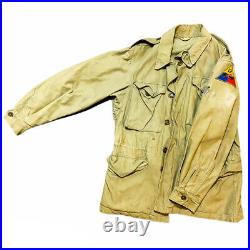
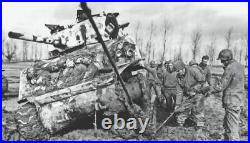



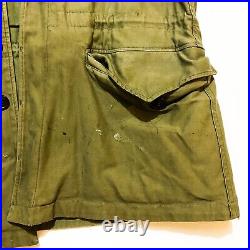
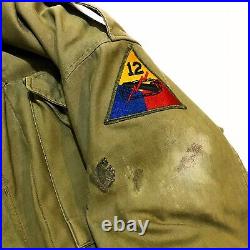


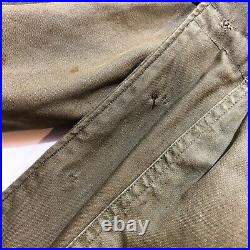


This original WWII M43 Tanker vets combat jacket shows signs of heavy use and repair on the sleeves and buttons. As combat on the frontlines was intense and rough, especially for armored divisions, many of these repairs were made in unit and can be seen on this jacket most clearly on one of inside buttons that was sewed on again and replaced. The 12th Armored Division was an armored division of the United States Army in World War II. It fought in the European Theater of Operations in France, Germany and Austria, between November 1944 and May 1945. The German Army called the 12th Armored Division the "Suicide Division" for its fierce defensive actions during Operation Nordwind in France, and they were nicknamed the "Mystery Division" when they were temporarily transferred to the command of the Third Army under General George S. The 12th Armored Division was one of only ten U. Divisions and only one of two U. Armored divisions during World War II that had African-American combat companies integrated into the division. One of the African American soldiers, Staff Sergeant Edward A. Was awarded The Distinguished Service Cross for gallantry in combat during World War II, and was later awarded the Medal of Honor posthumously. Paratroopers also received their own unique uniform in 1942, the M-1942 Paratrooper uniform. It was constructed of light green cotton twill, with four front pockets and two pant-leg cargo pockets. They also were issued a new boot design of their own, of similar construction to the infantry shoe, only being mid-shin high and laced all the way up, known as jump boots. There were many issues with these uniforms. The combat wool, khaki, and paratrooper trousers all did not have adequate locking stitches in the crotch resulting in frequent tears at that stress point. Paratrooper uniforms also often tore at the knees and elbows; they were often reinforced with canvass patches added by soldiers. The infantry uniform was lacking in functionality compared to the paratrooper uniform, and the tanker winter uniforms were sought after by almost every branch in the Army, making supply and production often difficult. Generally, these uniforms were seen as inadequate, and the Army sought to standardize a better uniform.
The uniform was tested in Italy in 1943 but some GIs (including Bill Mauldin) claim that non-combatant officers and enlisted personnel would use their position in the rear to get the new uniform, delaying the ultimate field testing in Italy for some time longer. After D-Day, Paratroopers were issued complete M1943 uniforms, and infantry units began getting the uniform parts here and there.
Paratroopers were generally the only ones to modify the uniform, mainly because they would add their own trouser cargo pockets sometimes. They kept their older "Corcoran" paratrooper boots instead of the new M43 buckle boots because they wouldn't potentially snag on their parachute when it deployed. The cotton sateen trousers were modified in 1944 with the addition of trouser cuff tabs and again in 1945 pattern with minor cut modifications and a move from stud to plastic buttons.